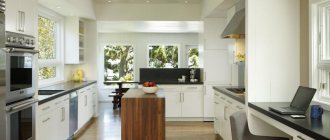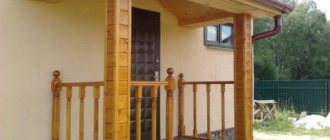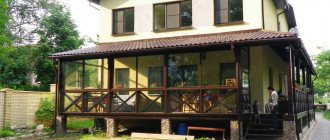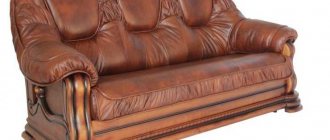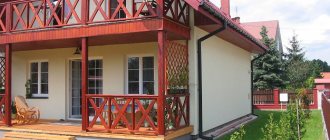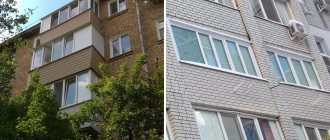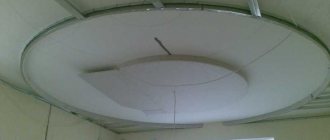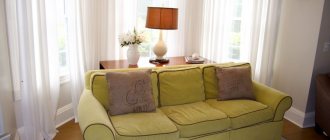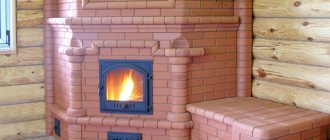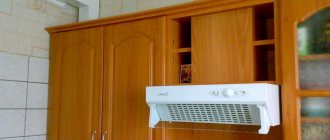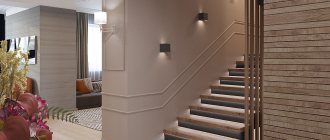An apartment in which renovation has been done in accordance with the interior design is unlikely to have errors in the selection of materials. Floor coverings that are selected correctly according to the functional loads of the rooms will last for the stated period. And the design of the floor of a particular room will merge into a single stylistic composition, thanks to the efforts of the designer.
The range of flooring materials is presented in stores in a wider variety than ever before. Design for wood, stone, fabric, leather. Highly wear-resistant, moisture-resistant, water-resistant, impact-resistant. The appearance and characteristics of floors for apartments and houses can be listed for a long time. Therefore, whether it is a high-tech, classic or noir apartment, choosing a flooring design will not be difficult. As for the selection depending on the purpose of the room, you can purchase not only traditional wooden floors or tiles, but also modern waterproof laminate.
Design Features
As a rule, the floor is installed from two layers: an intermediate layer and the floor covering itself. In some cases, the first layer is omitted and the covering is bonded directly to the floor slab.
This option can be resorted to only in extreme cases: a floor in an apartment made in this way will not only not provide sound insulation, but will also be cold and, most likely, uneven.
Modern floors have a more complex design, including layers of moisture, sound and heat insulation. A smooth surface is achieved by using a screed during rough finishing. There are several options for performing this procedure.
When performing a wet screed, a solution is made that is used to fill the floor. The drying time is quite long - up to 29 days. You can apply a coating over a semi-dry one within a week. In addition, it provides additional heat and sound insulation. Dry floor screed in an apartment can be covered with a coating immediately after installation.
Subfloor
The floor in a private house requires additional insulation. Depending on the material chosen for insulating the subfloor, its installation differs. When expanded clay is used, priority is given to a solid plank floor. When choosing mineral wool for insulation, subfloors are attached to the bottom of the beams.
Be sure to install a vapor barrier. Thermal insulation is often limited to thin plywood on both sides. And a permanent floor is laid on top of it.
Floor coverings
The choice of coating depends on a number of factors.
- If the apartment is located above a basement, remember that not every wooden floor will “survive” constant humidity.
- For a home with small children or pets, look for coatings that are as easy to clean and durable as possible.
- Some house designs do not provide for excessive loads, which eliminates the need for a concrete screed.
Preparing the frame for wood covering
The frame can be various options that differ in strength, reliability, convenience and durability. Using concrete slabs or an existing wood floor will reduce the cost of purchasing wood, but reliability and durability will be questionable.
Laying out a wooden floor with your own hands should be done on logs with a concrete base covered with plywood screed.
When starting to lay out, it is necessary to take logs with a cross section from 45x65 to 60x105, the humidity of which does not exceed 12% of the indicator. Fastening should be done using dowels or screws to the concrete base while maintaining a distance.
For the floor, you should choose plywood with increased moisture resistance, the thickness of which will not exceed 18 mm. The sheets are laid perpendicular to the joists for maximum effective fastening.
Next, in the gaps between the plywood and the wooden flooring, the wooden floor is insulated using sound-insulating and moisture-repellent material. The boards are fastened over the beams using a cross method with each subsequent row shifted.
Taking into account the smallest nuances, the bolts used for fastening must be recessed into the boards, so that during further polishing their metal caps do not create obstacles.
Stone flooring: 50 photo ideas Bathroom flooring - 80 photos Laminate flooring - 80 photos Floor tiles - 90 design photos How to cover a floor with parquet - 50 design photos Finishing the floor in an apartment - 45 photos
Parquet
An always up-to-date type of coating with a spectacular appearance. Today, many varieties of parquet are produced in different colors and patterns. The materials are various types of natural wood.
This leads to one of its main disadvantages - high cost. In addition, making this floor at home with your own hands is not an easy task.
Laminate
It is considered optimal in terms of price/quality ratio. Classic laminate looks like natural wood, but there are options that are more stylized to look like stone, leather or other material. If desired, you can depict almost any pattern on it.
Liquid tile
The unusual floors in the photo are polycarbonate tiles. It has several layers, between which liquid paint is placed. If you walk on such a floor, the paint, when pressed, takes on the random appearance of a colored blot. Consequently, the pattern is constantly changing. It is unlikely that such an “interactive” floor will look harmonious in a residential area, but restaurants, clubs and children’s centers take advantage of this “wow” effect.
Which floor is better to put in the kitchen?
The kitchen is a special room in the house. For her, the norm is changes in temperature, humidity, various odors, steam and regular pollution. Let's consider what floor to put in the kitchen so that it is as functional and beautiful as possible.
The material is practically not represented on the Russian market, it is difficult to find, and the price of one tile reaches 10 thousand rubles. It is still difficult to find such a rarity even in the form of a small insert.
The material, for all its creativity, has a lot of disadvantages: • The tiles are difficult to install and cannot be trimmed. • You cannot install underfloor heating under such a floor. • Does not tolerate temperature changes.
Carpet
Made from synthetic and natural fibers, the length of the pile varies. Soft, cozy material replaces carpet on the floor. Provides sound insulation.
Beige curtains in the interior - more than 150 photos of new curtain designs for 2020. Rules for the perfect beige color combination- Design of a four-room apartment - stylish projects and the best renovation ideas (115 photos)
Apartment 60 sq. m.: modern ideas on how to decorate an apartment. 80 photos of the best options
The downside is its fragility, since the pile tends to wrinkle. In addition, it accumulates dust and dirt, so you will have to clean it regularly.
How to make the right choice?
When choosing a material for indoor flooring, you should pay attention to strength and durability. The dimensions of the boards of one batch should approximately correspond to each other, this will indicate their correct processing. And the absence of knots will allow you to count on the integrity of the coating.
The finished material can be of two types: processed and unprocessed. The first involves complete grinding and adjustment to a single size. Untreated material will have rough edges and will need to be treated to your liking before use.
You should only purchase completely dried wood. Moreover, the drying process should not take place in direct sunlight, otherwise the wood will become unusable due to unevenness. When buying damp material, you need to consult with professionals on how to make a wooden floor from it.
Boards placed on the floor must be treated with antiseptics and fire retardants. This coating will reduce the risk of burning and rotting.
Children's
It can be difficult to find sufficiently practical material for the room where a child lives. Cork is considered the most suitable today. It provides good sound insulation, is not afraid of moisture, is safe and hypoallergenic.
When learning to walk, a small child will often fall - the elasticity of the material will protect him from accidental bruises and reduce the load on the spine.
